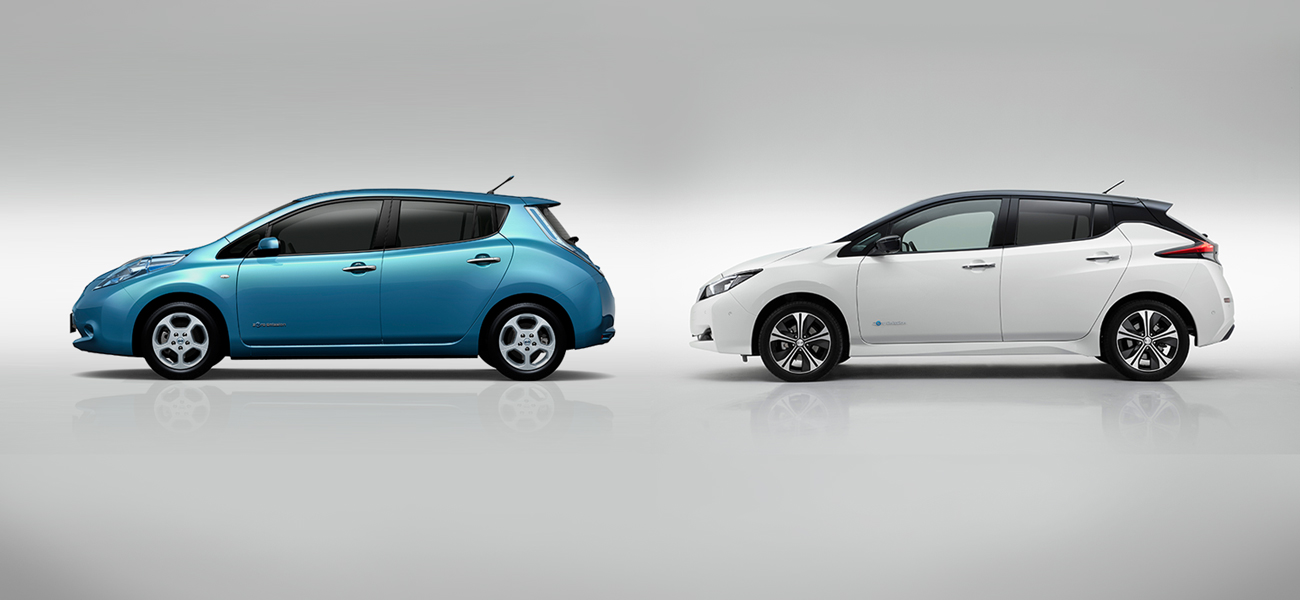Nissan is celebrating 10 years of the all-electric LEAF, the world’s first mass-market electric vehicle (EV). The pioneering LEAF hit the roads in December 2010. First sold in Japan, Europe and America, it’s now driven in 59 markets. Customers worldwide have bought more than half a million LEAF electric cars.
Small in size but big on innovation, the Nissan LEAF laid the foundations of modern day electric vehicles. By reimagining the very idea of what a car is, the LEAF is helping customers, cities and governments to create a more sustainable future. It’s doing this by going beyond mobility and exploring new ways for electric vehicles to plug into everyday life.
The LEAF’s battery technology is helping power homes and businesses, while broader Nissan EV innovation is at the heart of vehicle-to-grid energy management services. LEAFs are also helping out during disasters.
It’s been quite the journey, with many milestones. Here are some key ones:
2010: History is made: the world’s first 100% electric car for the mass market
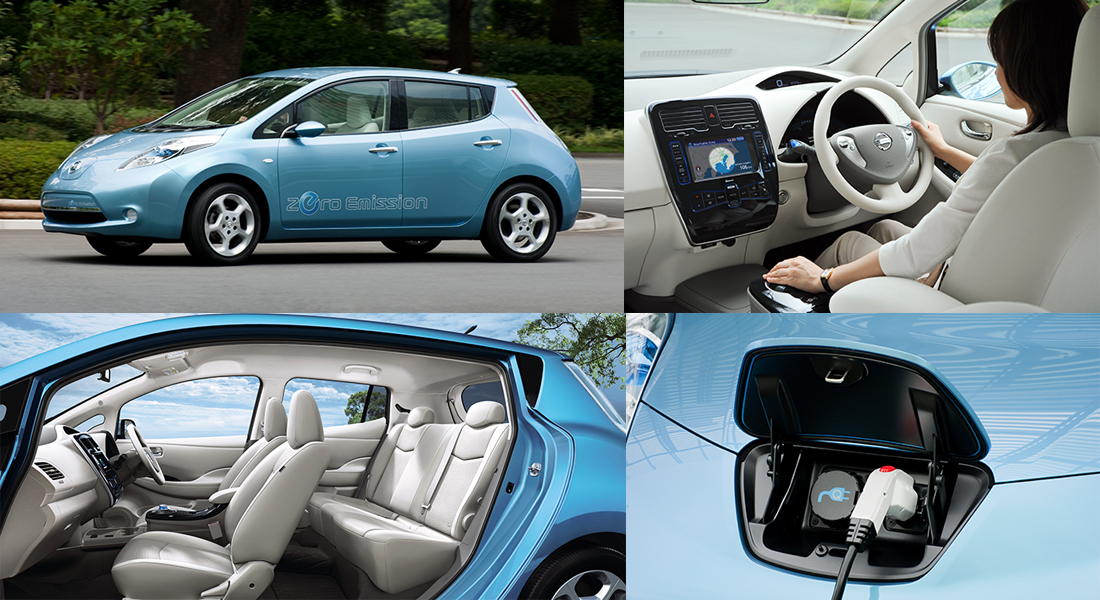
Nissan's vision was to tackle urbanization and industrial development by building a car that emits no carbon dioxide but is still loads of fun to drive. The first-generation LEAF had powerful acceleration and handling, delivering smooth driving performance. Unique features allowed drivers to use their cellphones to check the car's battery level or manage air conditioning remotely. A 24 kilowatt-hour lithium-ion battery powered the first model. Fully charged, it had a range of 200 kilometers.
Nissan worked with governments, municipalities and electric power companies to promote electric vehilces and develop an extensive charging infrastructure. When the LEAF was first arrived Japan had about 200 CHAdeMO1-standard quick chargers. Today, there are more than 30,000 of these chargers around the world.
Nissan made history and the world took notice: The LEAF became the first electric car to win a string of prestigious awards including "European Car of the Year 2011", "World Car of the Year 2011" and "Japan Car of the Year 2011-2012".
2012: Game changer: A car that powers your home

Two years after introducing the LEAF, Nissan became the first company in the world to unveil a system that lets customers share power between their homes and cars. With Vehicle-to-Home (V2H) system, LEAF owners could store energy in their car battery and feed it back to their homes whenever they wanted. They could charge the car's battery when demand and rates were low and use it around the house during peak times.
At the same time, the LEAF began to make a difference during natural disasters that interrupt electricity supplies. It served as an emergency power supply on wheels, which could also store energy where needed. On the Hawaiian island of Maui, the LEAF took part in a smart grid project, helping stabilize the power network.

2012: First upgrade boosts range to 228 km



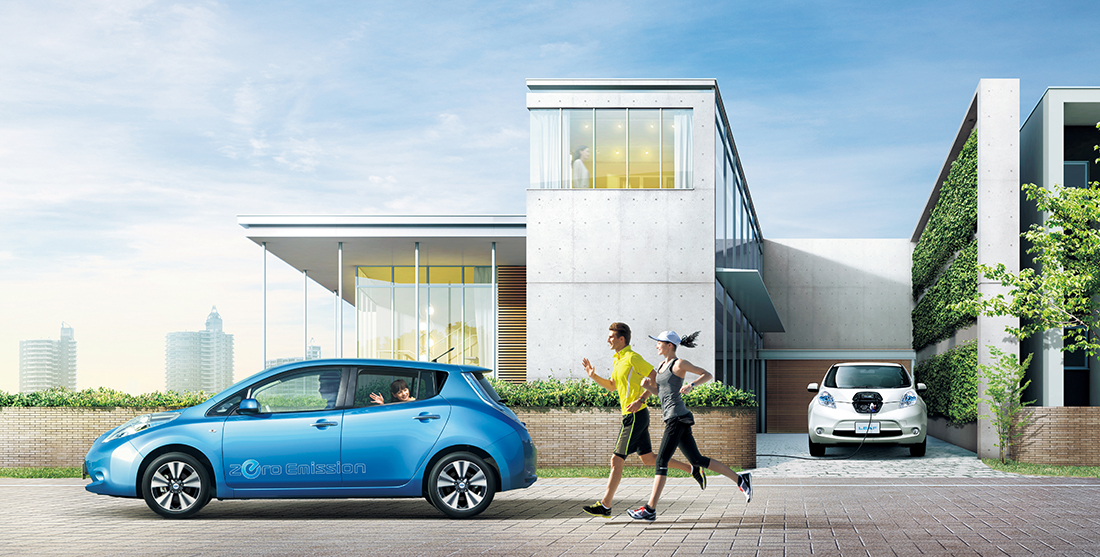
Improvements to the electric powertrain, gave the LEAF more power and extended its range to 228 km. This gave drivers extra peace of mind as they planned how and when to charge their batteries. More range didn't mean bigger components. In fact, the new electric powertrain was smaller. The volume was reduced by 30% and mass by 10%. Reduced power consumption also enabled new perks, like heated seats and steering wheel.
In 2014, LEAF sales broke through the 100,000 mark.
2015: Second upgrade adds more tweaks and even greater range

Battery improvements began to accelerate. The LEAF got a 30 kWh battery and a range of 280 km, all without compromising cabin space or charging time. Even with the added capacity, the new battery could be charged to 80% in the same time it took to charge its predecessor.
The update also included new safety technologies. These included Intelligent Emergency Braking, which uses a front camera to detect vehicles and pedestrians.
The LEAF celebrated its fifth anniversary just before sales hit 200,000 vehicles.
2017: Breakthrough moment: Second-generation LEAF offers 400km range, e-Pedal and ProPILOT technology
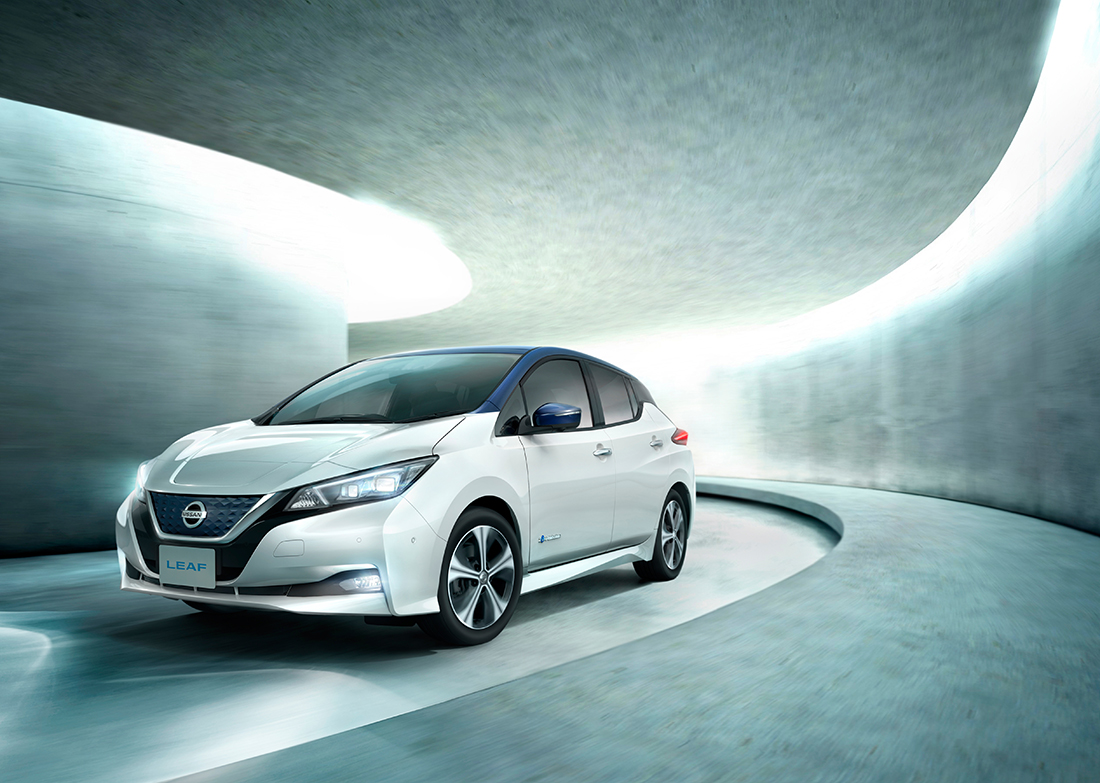
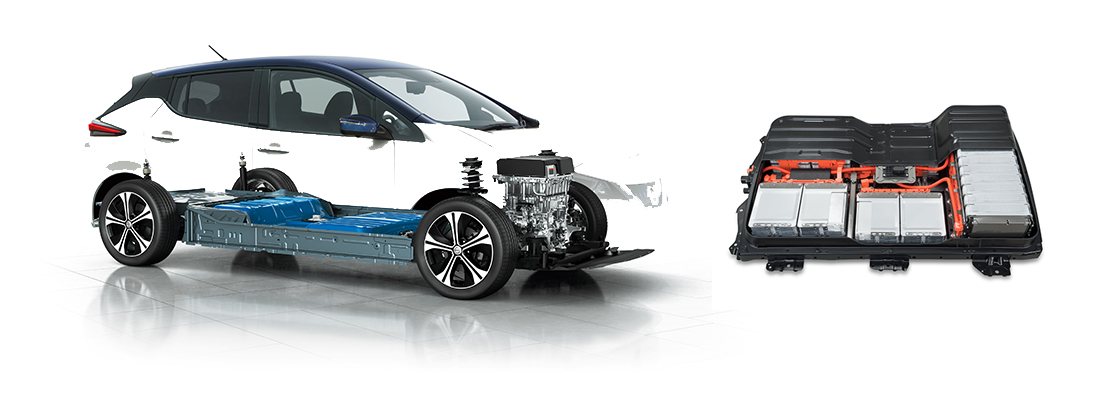
It was time to make history again. The second-generation LEAF introduced unprecedented technologies that boosted enjoyment, convenience and efficiency. These included the e-Pedal for one-pedal driving and ProPILOT advanced driver assistance. A new electric powertrain increased power output by 38% to 110 kW and torque by 26% to 320 Nm, providing an exhilarating driving experience. The new lithium-ion battery was no bigger than those that came before, yet had 67% more energy density than the 2010 model and offered a range of 400 km.


In 2017, the LEAF headlined Nissan's first car-sharing service in Japan, called e-share mobi. This allowed everyone to experience Nissan's latest EV and its driver assistance technologies. By early the following year, 300,000 LEAFs were on the roads worldwide.
2018: Beyond mobility: Nissan Energy offers new ways to use the LEAF


With innovation from the Nissan Energy program, the LEAF became even more useful to owners. Through smart storage and charging, the car could better share energy with a home or a business. The Nissan Energy Home, a demonstration of Nissan Energy's work and ideas, was unveiled at the Nissan Global Headquarters Gallery in Yokohama.
Nissan developed systems to reuse and recycle old batteries. 4R Energy, a Nissan's affiliate, opened a plant in the town of Namie, Futaba District, Fukushima Prefecture in northeastern Japan, which focused on re-using EV lithium-ion batteries.
Innovation to get the heart racing: Development of the Nissan LEAF NISMO RC


Following a study based on the original LEAF, and to show how much untapped potential lay in electrically powered cars, Nissan created the LEAF NISMO RC (Racing Competition).
Motorsport fans around the world witnessed the quiet but exciting zero-emission driving experience offered by Nissan's electrification technologies.
The first-generation NISMO RC was built in 2011 with the same battery, motor and inverter used in LEAF production cars. They were installed in the center of the vehicle to create a rear-wheel-drive system.
The second-generation NISMO RC, came in 2018. It was revamped and given twin motors, four-wheel drive and an aggressively-styled body. The lithium-ion battery and inverter used technologies from the second-generation Nissan LEAF, with the motor producing 240 kW of power and 640 Nm of torque. It was twice as powerful as the 2011 model.
2019: A new arrival: The top-end Nissan LEAF e+


A new electric powertrain gave the Nissan LEAF e+ a more powerful motor and extended range. Its 62 kWh battery had 55% more capacity. This change pushed the car's range to 458 km2, again without sacrificing space or design. What stayed the same was the instant torque that makes the LEAF so fun to drive.
By 2019, more than 400,000 customers around the globe had bought a LEAF.
The ever-evolving trailblazer
Cars were invented over a century ago. Over the past 10years, the Nissan LEAF has spearheaded the start of a transition from less gas-guzzling internal combustion engines towards zero-emission electric vehicles.
When the model arrived in 2010, some didn't buy this vision. Today, almost every automaker has followed. The Nissan LEAF helped bust the myths and misconceptions around electric cars.
The LEAF's incredible journey shows how quickly customers embrace electric vehicles once they've experienced them. The pioneering hatchback has helped change not only the way cars are built, but the way we live.
1) Based on Japan's JC08 test standard
2) Based on WLTC mode


